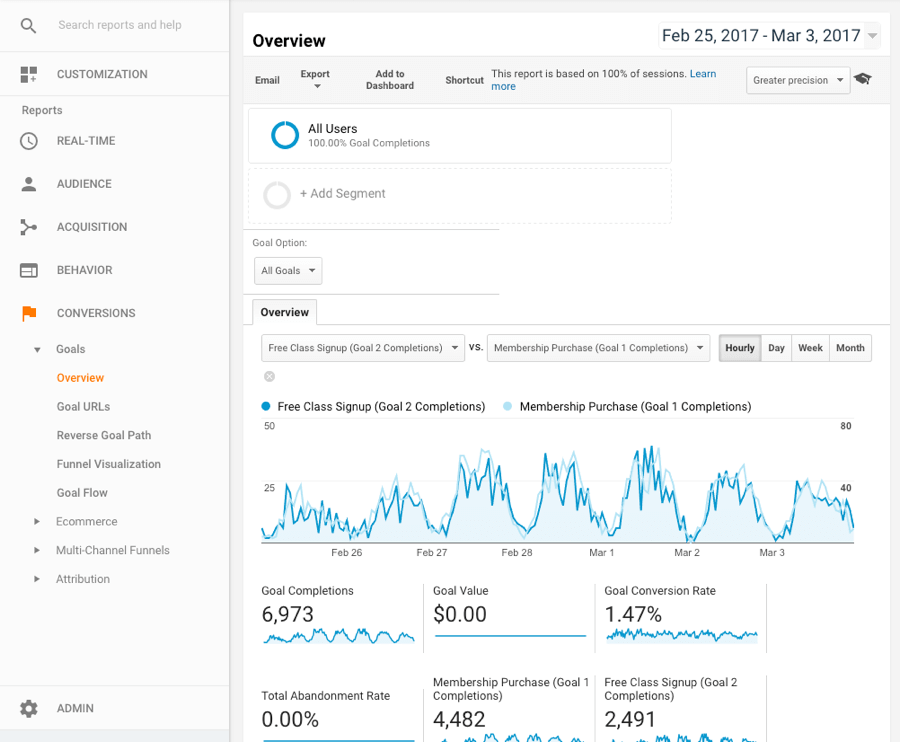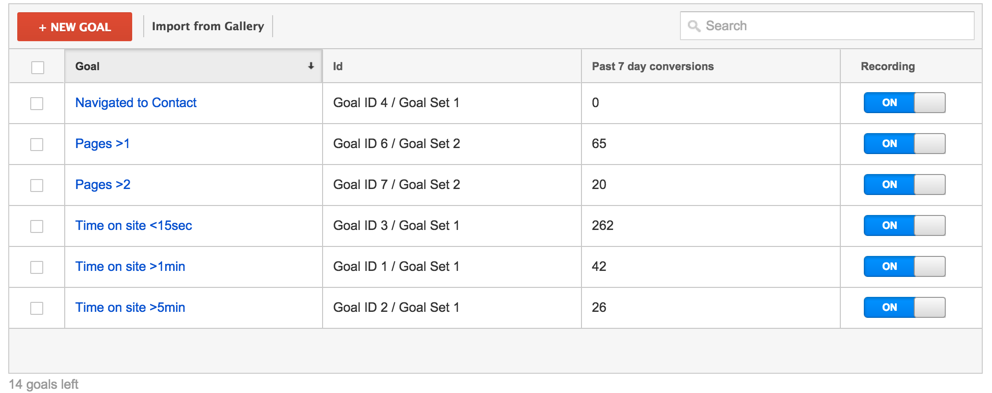Secret Insights on What Data Is Google Analytics Goals Unable to Track
Secret Insights on What Data Is Google Analytics Goals Unable to Track
Blog Article
Discover the Limitations of Google Analytics Goals: Introducing the Data Types That Remain Untrackable
As businesses increasingly depend on data-driven decision-making, understanding the constraints of devices like Google Analytics becomes paramount. While Google Analytics Goals deal important insights right into individual communications, there exist information kinds that elude monitoring, posing difficulties to an extensive understanding of customer habits. These untrackable data types elevate questions regarding the precision and completeness of the analytics information that companies heavily depend upon for their electronic techniques. Interested to reveal the covert blind places in your data analysis process?
Insufficient User Journey Tracking
Incomplete individual journey tracking within Google Analytics can impede the capacity to accurately analyze customer behavior. When the individual trip is not totally tracked, there are gaps in the data that prevent a thorough understanding of how individuals connect with a web site. This absence of understanding can lead to missed out on chances for optimization and improvements to the user experience.
One common concern with incomplete user journey tracking is the lack of ability to see the complete course that users take previously completing a goal or leaving the site. Without this details, it is testing to identify where users may be encountering barriers or rubbing points that prevent them from transforming. In addition, incomplete tracking can cover the effect of specific advertising initiatives or website changes on customer behavior.
To address this limitation, it is vital to establish up correct tracking devices within Google Analytics to catch the entire customer journey. This might include establishing up event monitoring, goal funnels, or utilizing devices like Google Tag Manager to ensure that no important communications go unrecorded. By obtaining a comprehensive view of the customer journey, site owners can make more informed decisions to boost customer engagement and drive conversions.
Acknowledgment Difficulties
Navigating through attribution difficulties in Google Analytics calls for a detailed understanding of how different touchpoints add to the overall conversion process. Attribution challenges occur from the complexity of modern-day client trips, where customers communicate with multiple networks prior to converting. Google Analytics gives different attribution designs like very first touch, last touch, and linear, each supplying a different viewpoint on how credit rating is appointed to touchpoints along the conversion path. Nevertheless, these versions may not always precisely reflect truth influence of each touchpoint on the conversion.
One common attribution challenge is the problem in connecting conversions to the proper resource, specifically in situations where customers communicate with multiple channels prior to transforming. This can bring about errors in determining which marketing initiatives are driving one of the most conversions. Furthermore, cross-device tracking presents one more acknowledgment difficulty, as individuals typically change in between gadgets during their journey, making it challenging to track their communications perfectly. Marketing experts must very carefully examine and translate acknowledgment data to make informed choices and enhance their advertising strategies properly.
Offline Conversions
Given the challenges associated with connecting conversions precisely in online networks, the measurement of offline conversions offers a significant opportunity for marketers seeking an extra detailed understanding of their clients' journey. Offline conversions describe activities that customers absorb the physical globe, such as making acquisitions in brick-and-mortar shops or over the phone, going to events, or engaging with printed products - what data is google analytics goals unable to track. These conversions are essential for organizations that operate both online and offline, as they offer useful understandings into the effectiveness of advertising and marketing campaigns throughout numerous touchpoints
Tracking offline conversions typically presented a substantial challenge for online marketers, as it was testing to attach these activities back to details online interactions precisely. With advancements in innovation, such as the combination of CRM systems, one-of-a-kind identifiers, and coupon codes, companies can currently connect the void between online and offline data to get a more all natural view of customer habits. By successfully measuring offline conversions, marketing experts can enhance their strategies, assign sources more successfully, and eventually enhance the total consumer experience.
Cross-Device Monitoring
Cross-device tracking plays an essential role in comprehending the interconnected nature of customers' digital interactions across multiple gadgets. In today's omnichannel globe, where individuals perfectly switch over between smart devices, desktops, and tablet computers, tracking their behavior across these devices is important for online marketers to acquire a comprehensive sight of their consumer trip.

In addition, personal privacy worries and guidelines such as GDPR and CCPA have additionally complicated cross-device tracking. With users demanding more control over their information and raised restrictions on monitoring modern technologies, marketing professionals have to locate privacy-compliant and innovative ways to link individual communications throughout tools.
Dynamic Web Content Involvement
Recognizing user address involvement with dynamic content is click pivotal in enhancing digital advertising and marketing strategies for enhanced target market interaction. Dynamic material describes website elements that transform based upon customer habits, choices, or other elements, supplying a personalized experience. Tracking user communications with dynamic web content presents challenges for traditional analytics devices like Google Analytics.
While Google Analytics can track fundamental communications like clicks and page sights, it may struggle to catch more nuanced interactions within vibrant material. what data is google analytics goals unable to track. Metrics such as time spent on certain dynamic aspects, float actions, or communications within pop-ups are usually not quickly measurable using standard monitoring techniques. This limitation hinders marketing professionals' capability to fully grasp exactly how individuals are engaging with dynamic web content and customize their strategies appropriately

Conclusion
To conclude, Google Analytics goals have restrictions in tracking incomplete individual trips, associating conversions accurately, catching offline conversions, tracking cross-device communications, and determining vibrant material interaction. These restrictions highlight the value of discovering added tracking methods and tools to acquire a much more thorough understanding of customer actions and conversions past what Google Analytics other can provide.
While Google Analytics Goals deal useful insights right into customer interactions, there exist data kinds that elude tracking, positioning obstacles to a comprehensive understanding of individual actions.Incomplete individual trip monitoring within Google Analytics can prevent the ability to precisely analyze individual behavior. When the user journey is not completely tracked, there are gaps in the data that avoid a thorough understanding of how customers engage with an internet site.One common issue with incomplete individual trip monitoring is the failure to see the complete course that customers take before finishing an objective or leaving the site. By gaining a thorough view of the user journey, internet site proprietors can make more enlightened decisions to enhance customer interaction and drive conversions.
Report this page